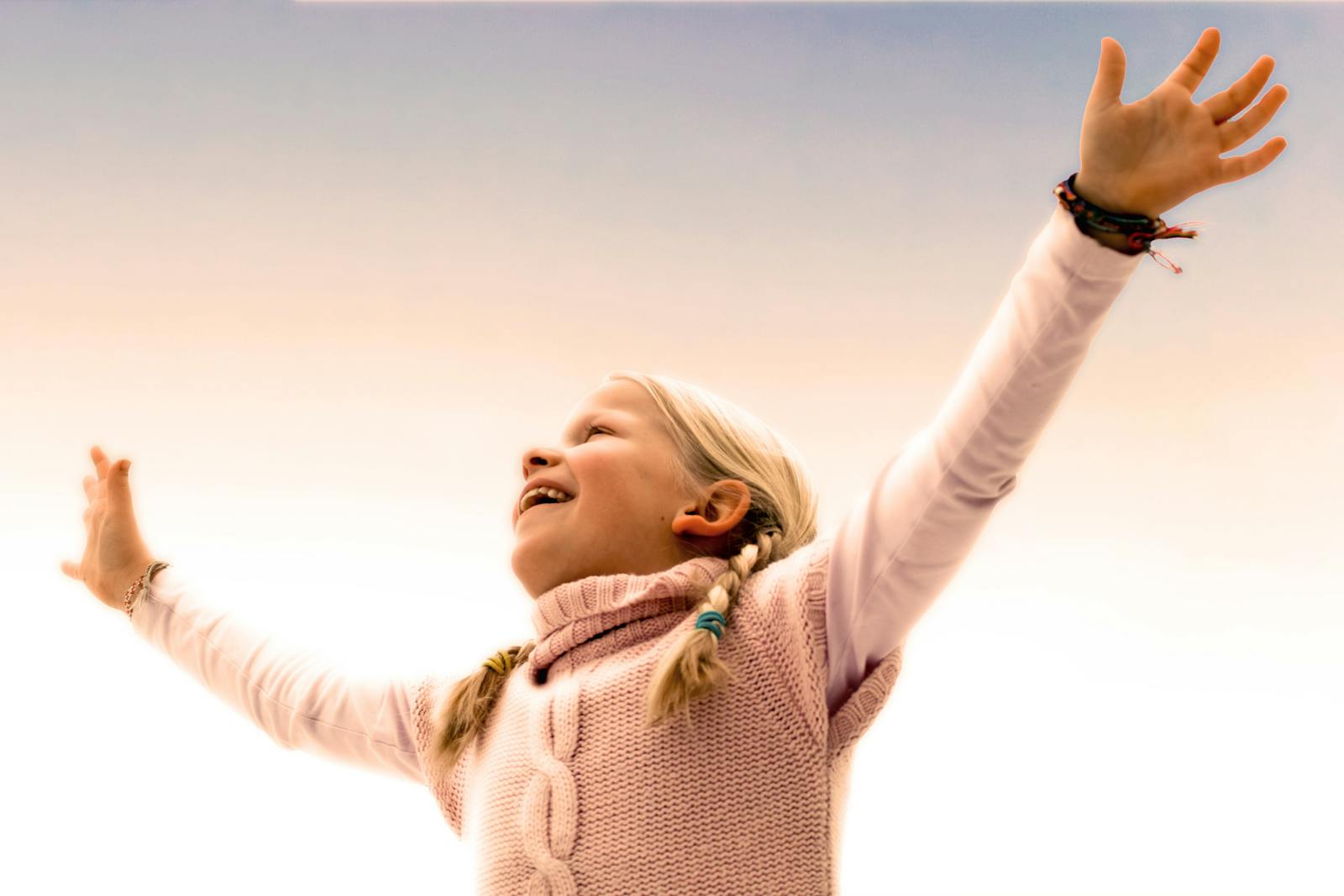In today’s fast-paced world, children are increasingly exposed to pressures from school, extracurricular activities, social media, and the constant stream of information available at their fingertips. The hustle and bustle of modern life can leave them feeling stressed, distracted, or overwhelmed. This is where the practice of mindfulness and self-reflection can play a crucial role in helping children manage their emotions, improve focus, and foster a sense of calm. Teaching children these skills early on can promote emotional resilience, mental clarity, and a greater sense of well-being that will serve them throughout their lives.
Mindfulness involves being fully present in the moment and aware of one’s thoughts, feelings, and surroundings without judgment. Self-reflection is the practice of looking inward, evaluating one’s emotions, actions, and thoughts to gain deeper insight into oneself. Encouraging children to engage in these practices may seem challenging at first, but with the right approach, it can become a meaningful and enjoyable part of their daily lives.
In this article, we will explore practical ways to encourage children to practice mindfulness and self-reflection, offering strategies that can be integrated into daily routines, family activities, and individual growth.
Why Mindfulness and Self-Reflection Are Important for Children
Before diving into the “how,” it’s important to understand why mindfulness and self-reflection are beneficial for children. Both practices help children develop essential life skills that contribute to emotional and cognitive development. Here are some of the key benefits:
- Improved Focus and Concentration: Mindfulness enhances a child’s ability to concentrate on tasks, whether it’s schoolwork, playing, or listening to instructions. It helps them stay present and minimize distractions.
- Emotional Regulation: Mindfulness and self-reflection teach children how to recognize and manage their emotions. This helps reduce impulsive reactions and fosters a sense of calm during stressful situations.
- Self-Awareness: Self-reflection encourages children to think about their feelings, actions, and behaviors. It helps them understand why they feel the way they do and how their actions impact others.
- Resilience: By learning how to observe their thoughts and emotions without judgment, children become more resilient in the face of challenges and setbacks.
- Empathy and Compassion: Mindfulness helps children develop empathy by encouraging them to be present and aware of others’ emotions. This leads to healthier relationships and a stronger sense of community.
- Stress Reduction: Children, like adults, experience stress and anxiety. Mindfulness practices help them relax, breathe, and reduce anxiety by teaching them to focus on the present rather than worrying about the future.
Now that we’ve outlined the importance of mindfulness and self-reflection, let’s explore how parents and caregivers can help children cultivate these practices.
1. Lead by Example: Be a Mindful Parent
Children are keen observers of the adults around them, especially their parents or caregivers. One of the most effective ways to encourage mindfulness and self-reflection in children is to model these behaviors yourself. By incorporating mindfulness into your own daily routine, you can show your child how to stay present, calm, and reflective.
For example, if you notice yourself feeling stressed or overwhelmed, you can pause and take a few deep breaths, explaining to your child why you’re doing so. You might say, “I’m feeling a little stressed right now, so I’m going to take a deep breath to calm myself down.” This shows your child that it’s okay to experience strong emotions and that there are healthy ways to manage them.
You can also practice self-reflection by talking openly about your own feelings and thoughts. If you’ve had a challenging day, share how you’re reflecting on what happened and what you learned from it. Children who see their parents practicing mindfulness and self-reflection are more likely to adopt these behaviors themselves.
2. Create a Calm, Mindful Environment
To help your child practice mindfulness and self-reflection, it’s important to create an environment that supports these practices. Designate a quiet space in your home where your child can go to relax, reflect, or practice mindfulness. This space doesn’t need to be elaborate—it could be a cozy corner of their bedroom, a small cushion by a window, or a spot in the backyard where they can connect with nature.
In addition to creating a physical space, you can also set the mood with calming elements such as soft lighting, soothing music, or aromatherapy. This helps your child associate the space with feelings of peace and relaxation.
Encouraging a calm, mindful environment also means reducing distractions, especially from screens and electronics. Limiting screen time, particularly before bedtime, helps children become more mindful of their surroundings and promotes better sleep.
3. Teach Simple Breathing Exercises
Breathing exercises are one of the easiest and most effective ways to introduce mindfulness to children. These exercises help children calm their minds and bodies by focusing on their breath, which can reduce stress and improve concentration. Teaching your child to take slow, deep breaths when they’re feeling anxious, upset, or overwhelmed can give them a powerful tool to manage their emotions.
Here’s a simple breathing exercise to teach your child:
- Balloon Breathing: Ask your child to sit comfortably and close their eyes. Have them imagine they are holding a balloon in their hands. As they inhale through their nose, tell them to pretend they are slowly inflating the balloon. As they exhale through their mouth, they can imagine slowly letting the air out of the balloon. Repeat this several times, encouraging them to focus on the sensation of their breath.
Another variation is the 5-4-3-2-1 grounding technique, which can help children focus on their senses:
- 5: Name five things you can see.
- 4: Name four things you can touch.
- 3: Name three things you can hear.
- 2: Name two things you can smell.
- 1: Name one thing you can taste.
This simple exercise encourages children to be fully present in the moment and reconnect with their senses, which helps reduce feelings of stress or anxiety.
4. Introduce Mindfulness Apps or Guided Meditations for Kids
Technology can be a helpful tool for teaching mindfulness, especially for younger children who may need guidance or structure. There are several apps and online resources specifically designed to introduce children to mindfulness and meditation in a fun and engaging way.
Some popular mindfulness apps for children include:
- Headspace for Kids: This app offers guided meditations tailored to children’s needs, from managing anxiety to fostering relaxation.
- Smiling Mind: This free app offers mindfulness programs for different age groups, including young children, teens, and adults.
- Stop, Breathe & Think Kids: Designed for children as young as five, this app provides guided meditations, breathing exercises, and mindfulness games.
You can also explore YouTube for child-friendly guided meditations that focus on calming their minds and bodies. Incorporating guided meditations into your child’s bedtime routine can help them wind down, reduce anxiety, and develop a habit of mindfulness.
5. Encourage Daily Self-Reflection with Journaling
Journaling is a fantastic way to encourage self-reflection in children. Writing down their thoughts, feelings, and experiences helps children process their emotions and gain deeper insight into themselves. For younger children, drawing or coloring can be a great alternative to writing, as it still encourages self-expression.
To get your child started with self-reflection, you can introduce a daily or weekly journaling practice where they reflect on their day, how they felt, and what they learned. Here are a few prompts you can use to guide your child’s self-reflection:
- What was the best part of your day? Why did it make you feel happy?
- Did anything make you feel sad or frustrated today? How did you deal with it?
- What is one thing you are proud of today?
- How can you make tomorrow even better?
For older children and teens, you can encourage them to keep a gratitude journal, where they write down three things they’re grateful for each day. This practice not only promotes mindfulness but also helps cultivate a positive mindset and greater appreciation for the present moment.
6. Practice Mindful Listening and Communication
Children often feel heard and understood when they’re engaged in mindful conversations with adults. Practicing mindful listening with your child involves giving them your full attention, listening to what they’re saying without interrupting, and responding thoughtfully. When children see that their thoughts and feelings are valued, they are more likely to practice mindful communication themselves.
To promote mindful listening:
- Make eye contact with your child and give them your full attention when they’re speaking.
- Avoid multitasking (such as checking your phone) while talking to them.
- Ask open-ended questions that encourage them to reflect on their thoughts and feelings.
You can also teach your child mindful communication by encouraging them to take a pause before responding in a conversation. This helps them become more aware of their words and tone, fostering better communication skills.
7. Incorporate Mindfulness into Daily Activities
Mindfulness doesn’t have to be a separate practice—it can be woven into your child’s everyday activities. Whether they’re playing, eating, or doing homework, there are opportunities to encourage mindfulness in daily life.
Here are a few examples:
- Mindful Eating: Encourage your child to slow down and pay attention to the taste, texture, and smell of their food. This practice helps them savor their meals and fosters a greater appreciation for what they eat.
- Mindful Walking: Take a walk outside and encourage your child to notice the sights, sounds, and smells around them. Ask them to describe what they see or hear, helping them stay present in the moment.
- Mindful Play: Whether they’re building with blocks, drawing, or playing sports, encourage your child to focus fully on the activity and enjoy the process without worrying about the outcome.
By integrating mindfulness into everyday activities, you can help your child develop a habit of staying present and engaged in whatever they’re doing.
8. Encourage Physical Mindfulness with Yoga or Stretching
Yoga is a great way to combine physical activity with mindfulness, and it’s something children of all ages can enjoy. Yoga teaches children to connect with their bodies, breathe deeply, and move mindfully. You can practice yoga together as a family or sign your child up for a kid-friendly yoga class. Many YouTube channels also offer free yoga videos specifically designed for children.
In addition to yoga, simple stretching exercises can promote mindfulness by encouraging children to focus on their body’s sensations as they move. Teaching your child to stretch in the morning or before bedtime can help them relax, reduce tension, and cultivate a greater sense of body awareness.
9. Encourage Gratitude as Part of Self-Reflection
Gratitude is a key component of mindfulness and self-reflection because it helps children focus on the positives in their lives, rather than dwelling on worries or frustrations. Encouraging your child to express gratitude on a regular basis fosters a positive mindset and enhances emotional well-being.
Here are a few ways to incorporate gratitude into your child’s daily routine:
- Gratitude Jar: Have your child write down something they’re grateful for each day and place it in a jar. At the end of the week or month, you can go through the jar together and reflect on all the positive things in their life.
- Gratitude Walks: While taking a walk outside, ask your child to point out things they’re grateful for, whether it’s a beautiful tree, a sunny day, or a friendly neighbor.
- Bedtime Gratitude Ritual: Before going to bed, encourage your child to reflect on three things they’re thankful for that day. This simple practice can help them end the day on a positive note.
10. Be Patient and Consistent
Lastly, remember that introducing mindfulness and self-reflection to children is a gradual process. Not every child will immediately embrace these practices, and that’s okay. The key is to remain patient and consistent in your efforts. By regularly incorporating mindfulness into your child’s life in fun and engaging ways, you’ll help them develop these important skills over time.
Celebrate small successes, and don’t pressure your child to practice mindfulness in a rigid way. The goal is to make mindfulness and self-reflection a natural and enjoyable part of their routine, so they can carry these skills with them as they grow.
Conclusion: Fostering Mindfulness and Self-Reflection in Children
Encouraging your child to practice mindfulness and self-reflection is one of the greatest gifts you can give them. These practices promote emotional resilience, self-awareness, and a sense of calm, all of which are crucial for navigating the complexities of childhood and adolescence. By leading by example, creating a mindful environment, and introducing simple mindfulness techniques, you can help your child develop these skills in a way that feels natural and enjoyable.
Mindfulness and self-reflection are lifelong tools that will serve your child well, not just in managing stress but also in fostering deeper connections with themselves and others. By incorporating these practices into their daily lives, you’re helping them build a strong foundation for emotional well-being, mental clarity, and personal growth.




